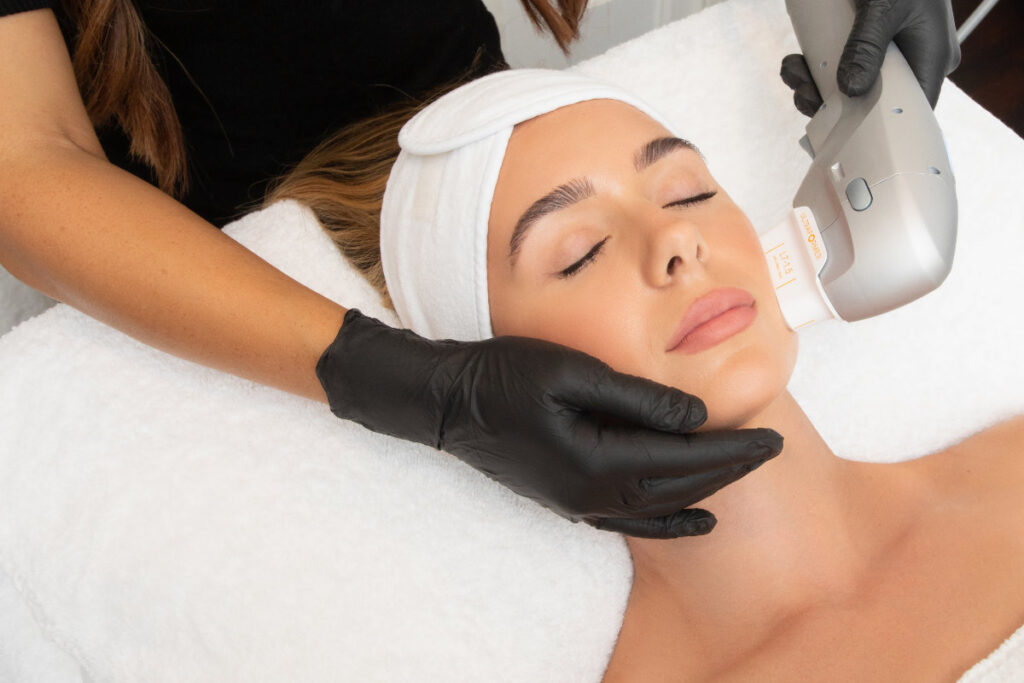
Hyperpigmentation is a widespread skin concern that affects individuals of all ages, skin types, and genders. At CliniSpa in Perth, Dr. Guy Watts, a Specialist Plastic & Reconstructive Surgeon, frequently consults with patients who have noticed darkened patches on their skin and are seeking guidance on their possible causes and management options.
Whether triggered by sun exposure, inflammation, or hormonal changes, hyperpigmentation can impact the skin’s appearance and prompt people to seek professional advice. Dr. Watts and his team at CliniSpa provide evidence-based assessments and treatment planning in a clinical environment, ensuring that patients in Perth feel informed and supported throughout their decision-making process.
What Is Hyperpigmentation?
Hyperpigmentation refers to areas of skin that become darker than the surrounding tissue due to an overproduction of melanin, the natural pigment that gives skin its colour. This increased melanin activity can be localised or spread across larger areas.
Common forms of hyperpigmentation include:
- Melasma: Often seen on the cheeks, forehead, and upper lip, melasma typically appears symmetrically and is frequently associated with hormonal fluctuations.
- Sunspots: Also known as solar lentigines or age spots, these are usually caused by cumulative sun exposure and tend to appear on the face, hands, shoulders, and arms.
- Post-inflammatory hyperpigmentation (PIH): This can develop after injury, acne, or skin irritation, particularly in individuals with medium to darker skin tones.
It’s important to understand that hyperpigmentation itself is not dangerous. However, some patients may wish to explore treatment if they find it persistent or cosmetically bothersome. At CliniSpa Perth, we help patients understand the origin of their pigmentation and whether any clinical intervention may be considered.
What Does Hyperpigmentation Look Like?
Hyperpigmentation typically presents as flat, discoloured areas that vary in shade depending on skin type and the depth of pigmentation. These may appear:
- Light to dark brown
- Grey, blue-grey or even reddish
- Sharply or diffusely defined
The intensity and pattern can vary. Some individuals notice scattered small spots, while others develop larger patches that affect overall skin tone.
Because hyperpigmentation often appears on visible areas such as the face or décolletage, many patients feel concerned about how it affects their appearance. While it does not usually cause discomfort or itching, patients commonly seek support to understand what’s driving the change and whether their skin tone can be evened out through medically guided care.
Common Causes of Hyperpigmentation
A number of factors can contribute to changes in pigmentation. Identifying the root cause is essential in tailoring an appropriate treatment approach.
1. Sun Exposure
Ultraviolet (UV) radiation is one of the most common causes of hyperpigmentation. When the skin is exposed to UV rays, it produces more melanin in an effort to protect itself. Over time, this response can lead to sunspots and general discolouration – particularly in a climate like Perth, where UV exposure remains high year-round.
2. Hormonal Changes
Hormonal shifts during pregnancy, while taking oral contraceptives, or during menopause can trigger melasma. This form of hyperpigmentation is more common in women and often deepens with additional sun exposure.
3. Inflammation and Trauma
When the skin is healing from injury – such as acne, dermatitis, cuts, or cosmetic procedures – it may overproduce melanin in the affected area, resulting in post-inflammatory hyperpigmentation. Individuals with darker skin tones may be more prone to this response.
4. Medications and Health Conditions
Certain medications, including chemotherapy agents, antimalarials, and hormone treatments, may contribute to pigmentation changes. Additionally, some systemic illnesses such as Addison’s disease or haemochromatosis may present with hyperpigmentation as a symptom.
Areas Most Commonly Affected
Hyperpigmentation can appear on virtually any part of the body but tends to develop in areas frequently exposed to sunlight or subject to hormonal influence. Commonly affected regions include:
- Face: Particularly the forehead, cheeks, upper lip, and nose.
- Neck and décolletage: Areas that are often uncovered and exposed to UV rays.
- Arms and hands: Particularly in those who spend significant time outdoors.
- Back and shoulders: Often affected by both sun exposure and post-acne pigmentation.
At CliniSpa, patients in Perth often present with pigmentation changes in these regions, prompting a professional evaluation to determine their cause and appropriate next steps.
When to Seek Professional Guidance
While hyperpigmentation is generally not a health risk, there are instances where seeking professional assessment is advisable:
- If the pigmentation changes in size, colour, or texture
- If the discolouration is accompanied by bleeding, discomfort, or crusting
- If the cause is unclear or unresponsive to general skincare
- If a patient is unsure whether pigmentation is benign or a sign of another condition
A proper diagnosis is critical. Pigmentation that resembles melanoma or another dermatological disorder must be ruled out by a qualified healthcare provider.
At CliniSpa in Perth, the team provides careful and comprehensive evaluations. A personalised approach ensures patients are not only informed about their condition but also guided on whether clinical care may be beneficial.
Treatment Options Available at a Medical Clinic
Not all hyperpigmentation requires treatment, but when patients choose to pursue it, medically supervised strategies are recommended. Each plan is tailored based on factors such as skin tone, cause, severity, and treatment goals.
1. Topical Treatments
Prescription-strength topical agents may include ingredients such as:
- Hydroquinone: Helps reduce melanin production when used short-term
- Tretinoin (retinoids): Improves skin cell turnover
- Azelaic acid and kojic acid: Gentle lightening agents
- Vitamin C derivatives: Antioxidants that help brighten skin tone
These should be used under medical supervision, particularly in individuals with sensitive or reactive skin.
2. Chemical Peels
A chemical peel involves the application of a controlled acid solution to the skin to encourage exfoliation and the regeneration of a more even tone. The strength and depth of the peel vary depending on the type of hyperpigmentation and the patient’s skin type.
3. Laser and Light-Based Treatments
Some clinics may offer laser or light-based therapies, which target deeper pigment in the skin. These treatments require thorough assessment and careful technique, particularly in darker skin tones, where the risk of complications can be higher.
Under the supervision of Dr. Guy Watts, all patients at CliniSpa Perth are provided with clear explanations of treatment benefits, limitations, and expected outcomes before proceeding with any clinical care.
Preventing and Managing Hyperpigmentation Long-Term
Prevention plays a key role in managing pigmentation changes. Even after successful treatment, ongoing maintenance is often necessary to minimise recurrence.
Recommended strategies include:
- Daily use of broad-spectrum sunscreen (SPF 30 or higher), reapplied every 2 hours when outdoors
- Protective clothing and hats, especially in Perth’s intense sun conditions
- Avoiding direct picking or squeezing of blemishes
- Using only prescribed or recommended skincare products, avoiding harsh or abrasive agents that can worsen pigmentation
- Scheduled follow-up: Regular reviews with a clinician to assess progress and update treatment plans
Patients at CliniSpa work closely with our team, who provides education and guidance on incorporating these strategies into their routine. This ensures any results achieved are supported over time with informed care.
FAQs About Hyperpigmentation
What is the difference between hyperpigmentation and melasma?
Hyperpigmentation is a broad term for any area of skin that appears darker due to excess melanin. Melasma is a specific type of hyperpigmentation that typically appears on the face and is often linked to hormonal changes, such as pregnancy or the use of oral contraceptives. While both conditions involve similar pigment changes, melasma tends to present in symmetrical patterns and may require different treatment considerations.
Can men develop hyperpigmentation as well?
Yes, hyperpigmentation affects both men and women. In men, it can result from sun exposure, acne, shaving-related irritation, or injury to the skin. While melasma is more common in women, men can also experience this form of pigmentation, particularly in sun-exposed areas like the forehead and cheeks.
Is it possible for hyperpigmentation to fade on its own?
In some cases, mild hyperpigmentation – especially post-inflammatory pigmentation – may gradually fade over time without treatment. However, deeper or long-standing pigmentation is less likely to resolve completely without medical intervention. A consultation with a qualified professional can help determine whether treatment may assist in managing the pigmentation more effectively.
How is hyperpigmentation diagnosed?
Hyperpigmentation is typically diagnosed through a clinical examination of the skin. In some cases, a medical history and evaluation of recent sun exposure, medications, or skin trauma may help identify the cause. A healthcare provider may use a device such as a Wood’s lamp to assess the depth of pigmentation and guide treatment recommendations.
Are over-the-counter skin-lightening products effective for hyperpigmentation?
Some non-prescription products may contain ingredients like niacinamide or vitamin C that can assist in evening skin tone. However, their results are generally mild and may not be suitable for more persistent pigmentation. It’s important to be cautious with products containing unregulated ingredients, as they may irritate the skin or worsen the condition. Seeking medical guidance is recommended for safe and effective care.
Can people with darker skin tones safely treat hyperpigmentation?
Yes, but treatment must be approached carefully. Individuals with medium to deep skin tones may have a higher risk of developing further pigmentation changes if treatments are not appropriately selected or applied. A personalised plan guided by a medically trained professional is essential to reduce risks and support a favourable outcome.
What can I do to prevent hyperpigmentation from returning after treatment?
Ongoing prevention is key. Daily application of broad-spectrum sunscreen, avoiding skin trauma, and following a medical-grade skincare routine as advised by your provider can reduce the likelihood of recurrence. Periodic check-ups at a clinic such as CliniSpa in Perth, led by Dr. Guy Watts, help monitor skin changes over time and adjust care as needed.
Medical References
- Demystifying Hyperpigmentation: Causes, Types, and Effective Treatments – Harvard Health Publishing – https://www.health.harvard.edu/diseases-and-conditions/demystifying-hyperpigmentation-causes-types-and-effective-treatments
- Management of Hyperpigmentation: Current Treatments and Emerging Therapies – Wiley Online Library – https://onlinelibrary.wiley.com/doi/10.1111/pcmr.12986
- Seeing Spots? Treating Hyperpigmentation – Mayo Clinic Health System – https://sncs-prod-external.mayo.edu/hometown-health/speaking-of-health/seeing-spots-treating-hyperpigmentation
- Clinical Practice Insights for Hyperpigmentation Treatment – European Medical Journal – https://www.emjreviews.com/flagship-journal/article/clinical-practice-insights-for-hyperpigmentation-treatment-j190324/
- How to Manage Facial Hyperpigmentation in Skin of Colour – PMC – https://pmc.ncbi.nlm.nih.gov/articles/PMC9165630/
Why Choose a Medically-Led Approach in Perth?
Addressing hyperpigmentation can be complex. There is no one-size-fits-all solution, and improper use of products or unverified treatments may worsen discolouration or damage the skin.
Working with a qualified medical professional ensures:
- Accurate diagnosis and exclusion of more serious conditions
- A treatment plan tailored to skin type, age, lifestyle, and pigmentation cause
- Access to therapies that are evidence-based and professionally administered
- Ongoing support throughout the treatment process
Dr. Guy Watts, Specialist Plastic & Reconstructive Surgeon, leads CliniSpa in Perth with a patient-first approach. His clinical training and experience ensure that patients receive clear, individualised care in a regulated, professional setting.
Further Reading
- Read more about Clinical Peels Refresh Facial
- Read more about Dermamelan Peel

